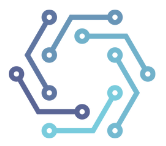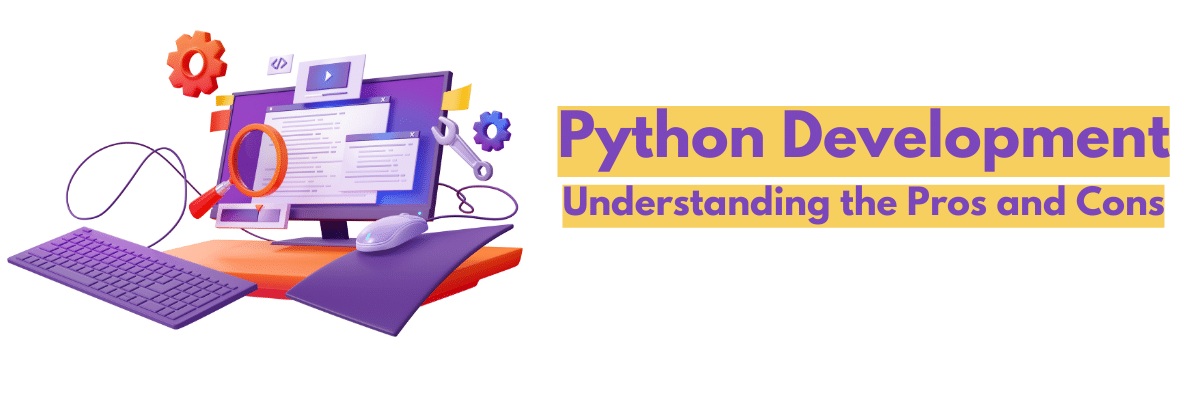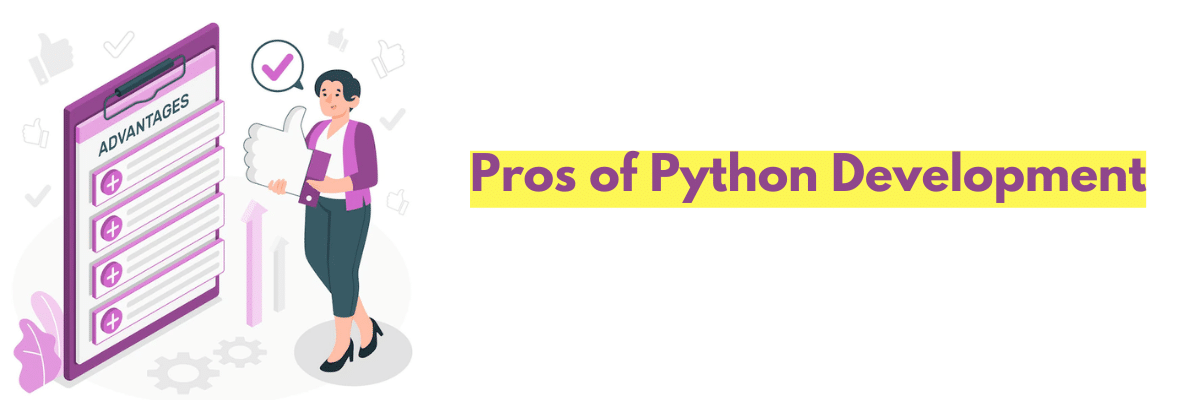Python Development: Understanding the Pros and Cons of a Popular Programming Language
Python is a high-level programming language that has gained significant popularity in recent years. It was first released in 1991 and has since become one of the most popular programming languages used in the world. Python is an interpreted language, meaning that it is executed line by line instead of being compiled into machine code. This makes it easier to read and write, as well as more accessible to beginners.
Python’s popularity can be attributed to its ease of use, readability, and versatility as a powerful programming language. It has a large community of developers who contribute to Python development and create libraries and frameworks that make it easier to build complex applications. Python is also known for its strong support for data science and machine learning, making it a popular choice for these fields.
Despite its many benefits, Python is not without its drawbacks. It is not as fast as some other programming languages, and it has limitations when it comes to memory-intensive tasks. Additionally, it is not as suitable for mobile app development compared to other languages like Java or Swift.
In this article, we will explore the pros and cons of Python development. By understanding the strengths and weaknesses of this popular programming language, you can make an informed decision on whether Python is the right choice for your development projects.
Table of Contents
- Pros of Python Development
- Cons of Python Development
- Real-World Examples of Python Development
- Factors to Consider When Choosing a Programming Language
- Conclusion
- Frequently Asked Questions
Pros of Python Development
Python has gained popularity over the years because of its numerous advantages. Here are some of the pros of using Python for development:
1. Ease of Use and Readability
Python is known for its clean syntax and easy-to-read code. Its simple and straightforward syntax makes it a popular choice for beginners as well as experienced developers who want to quickly prototype their ideas. This makes Python a great language for rapid development, as it allows developers to focus on the logic of their code rather than the syntax.
2. Large Community and Resources
Python has a large and supportive community, which means that developers can find help and resources easily. This includes everything from documentation and tutorials to libraries and frameworks. Python’s popularity also means that there are many job opportunities available for developers who specialize in Python.
3. Versatility and Flexibility
Python can be used for a wide range of tasks, from web development to data science, machine learning, and more. Its versatility and flexibility make it a great choice for developers who want to work on multiple projects or switch between different development tasks.
4. Strong Support for Data Science and Machine Learning
Python has become the go-to language for data science and machine learning. It has a variety of libraries and frameworks, such as NumPy, Pandas, and TensorFlow, which make it easy to perform complex data analysis and build machine learning models.
5. Excellent Libraries and Frameworks
Python has a rich ecosystem of libraries and frameworks, which makes it easy for developers to build complex applications quickly. Some of the most popular libraries and frameworks in the Python community include Django, Flask, SciPy, and Pygame.
In summary, Python’s ease of use, large community, versatility, and support for data science and machine learning make it a popular choice for developers who want to build applications quickly and efficiently.
Cons of Python Development
While Python development has many advantages, it also has some limitations that developers should be aware of before starting a project. Here are some of the cons of using Python development:
1. Slower Speed Compared to other Programming Languages
Python is an interpreted language, which means that it is slower than compiled languages like C++ and Java. This can make it less suitable for applications that require fast performance, such as video games or real-time applications.
2. Global Interpreter Lock (GIL) Limitations
Python’s GIL allows only one thread to execute at a time in a single process, which can limit performance in multi-threaded applications. This means that Python development may not be the best choice for applications that require a lot of concurrency.
3. Less Suitable for Memory-Intensive Tasks
The garbage collection mechanism of Python development can cause memory allocation and deallocation issues, making it less suitable for memory-intensive tasks. However, there are ways to optimize memory usage in a Python program by using libraries like NumPy and Pandas.
4. Limited Mobile App Development Capabilities
While Python can be used for mobile app development, it is not as popular as other languages like Java or Swift. This means that developers may encounter limitations or difficulties when developing mobile applications in Python.
5. Difficulties with Concurrent Programming
Although Python has built-in support for multi-threading, it can be difficult to write concurrent programs in Python because of the GIL. This can make it less suitable for applications that require a lot of concurrency.
In summary, Python’s slower speed, GIL limitations, memory allocation issues, limitations in mobile app development, and difficulties with concurrent programming can be drawbacks for certain development projects. However, there are ways to work around these limitations and optimize performance in your Python code.
Real-World Examples of Python Development
Python development has been used in a wide range of industries and applications, from web development to data science and beyond. Here are some real-world examples of Python development:
1. Web Development
Python has been widely used for web development, particularly with the Django and Flask frameworks. Many popular websites, including Instagram and Pinterest, were built using Python development.
2. Data Science and Machine Learning
The support for data science and machine learning of Python development has made it a popular choice for researchers and developers. Python has a variety of libraries and frameworks, such as NumPy, Pandas, and TensorFlow, which make it easy to perform complex data analysis and build machine learning models.
3. Scientific Computing
The language has also been used extensively in scientific computing, particularly with the SciPy library. SciPy provides tools for scientific computing, including modules for optimization, signal processing, linear algebra, and more.
4. Gaming
Python can also be used for game development, particularly with the Pygame library. Pygame provides tools for game development, including graphics and sound, and has been used to develop games like World of Tanks and Civilization IV.
5. Automation and Scripting
Python’s ease of use and versatility make it a great choice for automation and scripting tasks. It can be used for tasks like automating repetitive processes, scraping data from websites, and more.
These are just a few examples of the many applications of Python development. Python’s flexibility and versatility make it a great choice for a wide range of projects and industries.
Factors to Consider When Choosing a Programming Language
Choosing the right programming language for a project is an important decision that can have a significant impact on the project’s success. Here are some factors to consider when choosing a programming language:
1. Project Requirements
The first factor to consider is the specific requirements of the project. What type of application or system are you building? What functionality does it need to have? The programming language you choose should be capable of meeting the requirements of your project.
2. Developer Expertise
Another important factor to consider is the expertise of your development team. Are your developers experienced in a particular programming language? Choosing a language that your team is familiar with can help ensure a smoother development process and reduce the risk of errors.
3. Community and Support
The programming language you choose should have a strong community and good support resources. This can include online forums, documentation, and libraries. A strong community can help you solve problems more quickly and efficiently.
4. Performance Requirements
If your project has specific performance requirements, such as speed or memory usage, you should choose a programming language that is optimized for those requirements. For example, C++ may be a better choice than Python for applications that require fast performance.
5. Integration with Other Tools and Systems
The programming language you choose should be able to integrate easily with other tools and systems that you are using. For example, if you are using a specific database management system, you may want to choose a programming language that has good support for that system.
6. Cost and Licensing
Finally, cost and licensing are important factors to consider. Some programming languages are open source and free to use, while others may require a license or have other costs associated with them. Make sure to factor in any costs associated with the programming language when making your decision.
By considering these factors, you can choose the programming language that is best suited to your project’s requirements and constraints.
Conclusion
Python is a popular programming language that offers a number of benefits, including ease of use, flexibility, and a large community of developers. However, as with any programming language, there are also potential drawbacks to consider, such as performance issues and limitations in certain applications.
When considering whether to use Python for your development project, it’s important to carefully weigh the pros and cons. Additionally, it’s important to consider other factors, such as project requirements, developer expertise, and support resources.
Ultimately, the decision of whether to use Python or another programming language will depend on the specific needs and constraints of your project. By carefully considering these factors, you can make an informed decision that will help ensure the success of your development project.
Frequently Asked Questions
What types of projects can be developed using Python?
Python can be used for a wide range of projects, including web development, data science, machine learning, gaming, and automation and scripting.
What factors should be considered when choosing a programming language?
Factors such as project requirements, developer expertise, community and support, performance requirements, integration, and cost should be considered when choosing a programming language.
Is Python a good language for beginners?
Python is considered a good language for beginners due to its simplicity, ease of use, and strong community support.
What job opportunities are available for Python developers?
Python programmers and developers can find job opportunities in fields such as web development, data science, machine learning, gaming, automation and scripting, and more.
How is Python different from other programming languages?
Python is different from other programming languages in areas such as syntax, ease of use, and strong community support, among others.
Can Python be used for enterprise-level projects?
Python development can be used for enterprise-level projects, but its limitations in areas such as performance and scalability may make it less suitable for certain applications.
What is Python in development?
Python in development refers to using the Python programming language to create software, applications, and digital products. It’s a versatile language known for its simplicity and strong community support for software development.
What are the pros of Python?
The pros of Python include its ease of use, versatility, strong community support, vast library of modules and packages, and suitability for a range of projects, including web development and data science.
What are the pros & cons of Python being a dynamically typed language?
Python’s dynamic typing allows for faster development, flexibility, and easier debugging. However, it may lead to errors at runtime and can affect performance.
What are the cons of using function in Python?
Functions in Python can lead to code complexity, reduce code readability, and create namespace issues if not properly organized, documented, or named.
What are the advantages and disadvantages of Python over C?
Python’s advantages over C include readability, ease of use, and a large library ecosystem. However, C is faster and more suitable for low-level programming.











